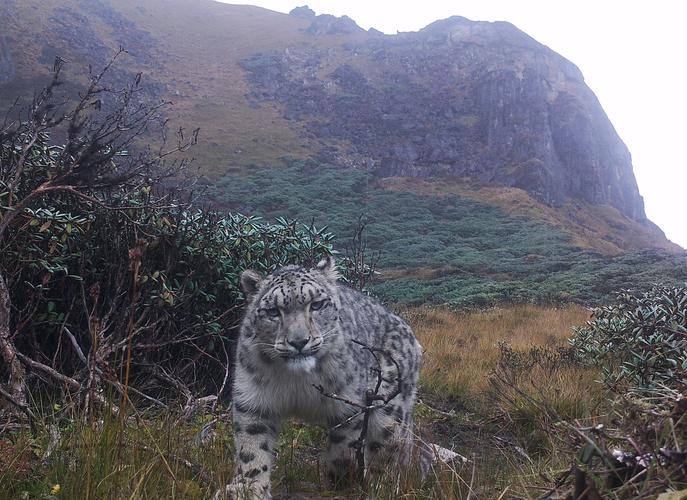Chhimi Namgyal
Other projects
5 Feb 2016
Status and Distribution of Asiatic Wild Dog (Cuon alpinus) in Jigme Dorji National Park, Bhutan
Habitats of the ‘endangered’ dhole (Cuon alpinus) and the ‘vulnerable’ snow leopard (Panthera uncia) are known to spatially overlap in Jigme Dorji National Park, located in north-western Bhutan. It is not known but highly suspected that there could be an overlap in dietary selection as well, which if proven will have negative implications on snow leopard conservation and alpine rangeland ecosystems. Therefore, I would like to investigate the extent of dietary overlap between these two top predators in Jigme Dorji National Park to provide a strong basis for development of pre-emptive conservation measures.

Camera trap image of a snow leopard at 4,500 m in Lunana, JDNP.
Jigme Dorji National Park, situated in north-western part of Bhutan, is one of the biodiversity-rich protected areas in Bhutan and in the eastern Himalayas. It is the only park in Bhutan where the ‘endangered’ Royal Bengal tiger (Panthera tigris) and the ‘endangered’ Dhole (Cuon alpinus) are recorded to occur in areas above 4,000 meters above sea level. Not only these information are new to science, they are also the source of concern to wildlife managers, as these two large predators could potentially outcompete the ‘vulnerable’ snow leopard (Panthera uncia) which faces additional threats from climate change. Tigers are occasional visitors to the snow leopard territory whereas dholes are known to frequent the uplands. If dholes are known to compete with the snow leopards for prey the latter will suffer from shortage of food which will threaten their survival. Limited natural prey will force snow leopards to predate more of domestic yaks which will exacerbate human-snow leopard conflicts, thus again threatening the species’ ultimate survival.
This research project aims to determine the extent of dietary overlap between the dholes and the snow leopards in the alpine areas of Jigme Dorji National Park. Scats of dholes and snow leopards will be collected from the potential areas of habitat overlap in the park. Dhole and snow leopard scats will be distinguished using field guides and the long-term field experiences and site familiarity of the field staff. Local people will also be consulted and their support will be solicited to collect scats, which will be analysed in the laboratory with the aid of a compound microscope. The scat analysis protocol described in published papers will be used. The reference slides of blue sheep (Pseudois nayaur), the principal natural prey of snow leopards, domestic yak and horses which are readily available at the Wildlife Forensics Laboratory of the Nature Conservation Division (Taba, Thimphu, Bhutan) will be used. Additional slides for the takin (Budorcas taxicolor) will be prepared.
Based on the study results, appropriate management recommendations will be made to the key policy makers and field practitioners which are mostly the park managers and field officers.